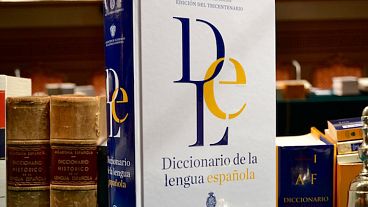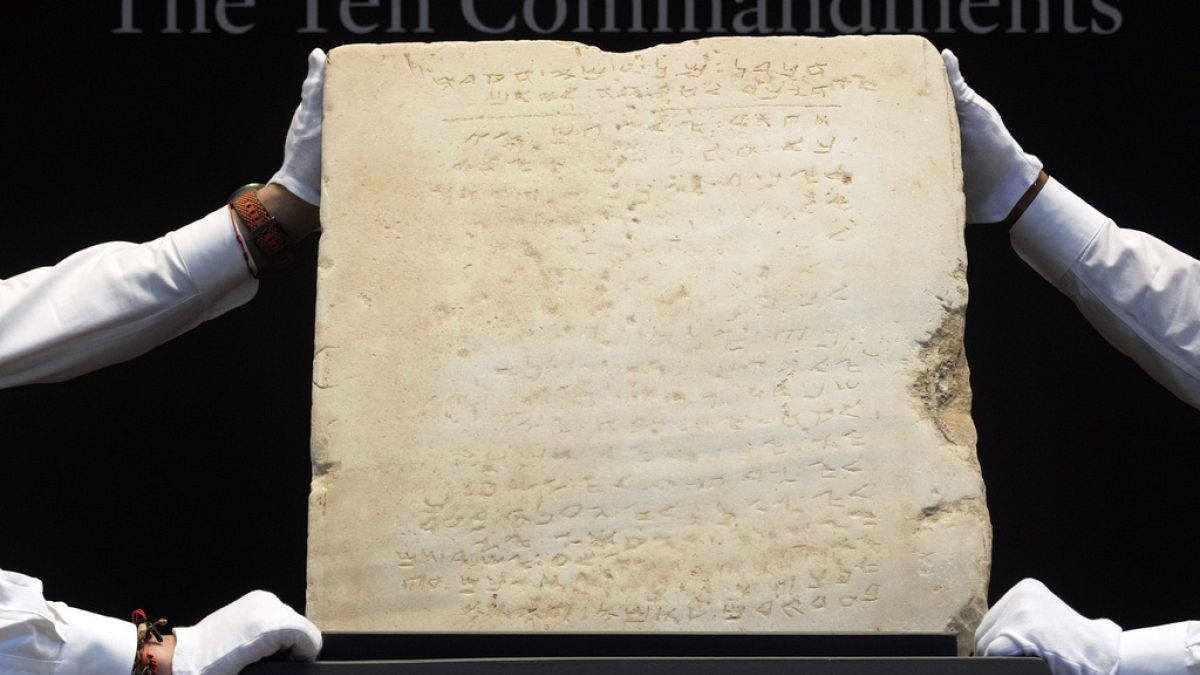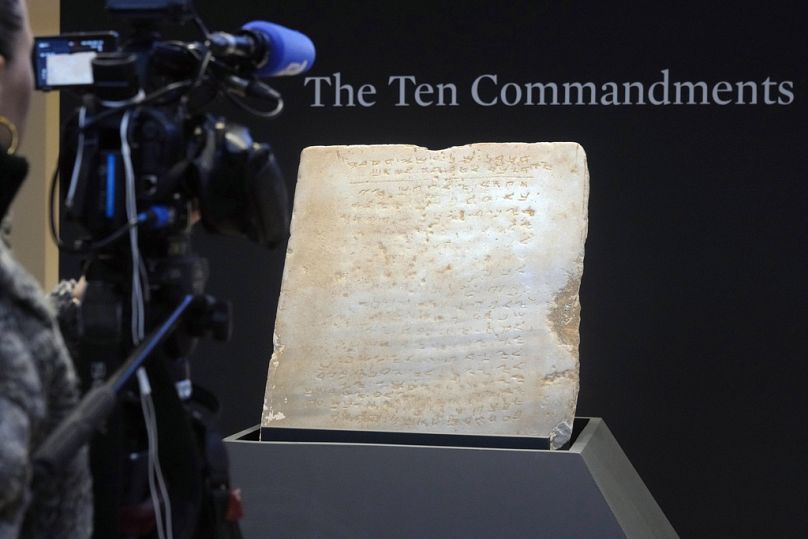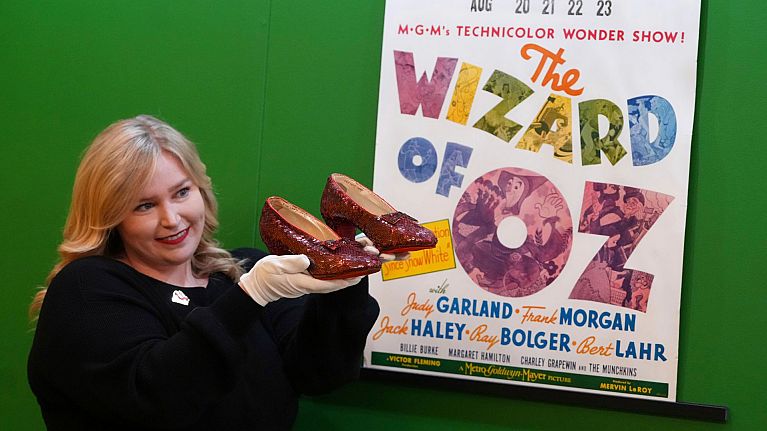The world’s oldest-known Ten Commandments tablet sold on Wednesday (18 December) for $5 million (€4.8 million) at Sotheby’s, far surpassing expectations. The marble slab, previously used as a paving stone, will be donated to an Israeli institution.
A rare artefact of biblical history has made headlines, as the oldest-known stone tablet inscribed with the Ten Commandments sold for a staggering $5 million (€4.8 million) at a Sotheby’s auction on Wednesday – well beyond its expected $1 to $2 million (€962,000–€1,924,000) price tag.
Weighing in at 52 kilos, this ancient marble slab is the only complete example of its kind, inscribed with the Ten Commandments in Paleo-Hebrew script.
Dating from between 300 and 800 A.D., the tablet was unearthed in 1913 during railroad excavations along Israel’s southern coast.
At first, its significance went unrecognised. In fact, it was originally used as a paving stone with the inscription facing down.
The auction saw more than ten minutes of intense bidding, ultimately ending with an anonymous buyer securing the tablet. According to Sotheby’s, the buyer intends to donate it to an Israeli institution for public display.
The slab’s inscription follows the biblical commandments familiar to both Jewish and Christian traditions, but with a few notable differences. It omits the third commandment, which forbids taking God’s name in vain, and introduces a directive unique to the Samaritans: a call to worship on Mount Gerizim, a holy site for the Samaritan people located near modern-day Nablus in the West Bank.
This extraordinary artefact has had a colourful history.
Discovered in 1943 by Jacob Kaplan, who published his findings in the Bulletin of the Jewish Palestine Exploration Society in 1947, the tablet changed hands several times before ending up in the possession of Israeli antiquities dealers and, eventually, in the Living Torah Museum in Brooklyn. In 2016, collector Mitchell S. Cappell purchased it for $850,000, and it was only recently that he decided to auction it.
“A tangible link to ancient beliefs that have profoundly shaped global religious and cultural traditions, it serves as a rare testament to history,” the auction house said.
Despite its historical importance, the tablet’s authenticity has been debated by experts, a common issue with such ancient relics.

















